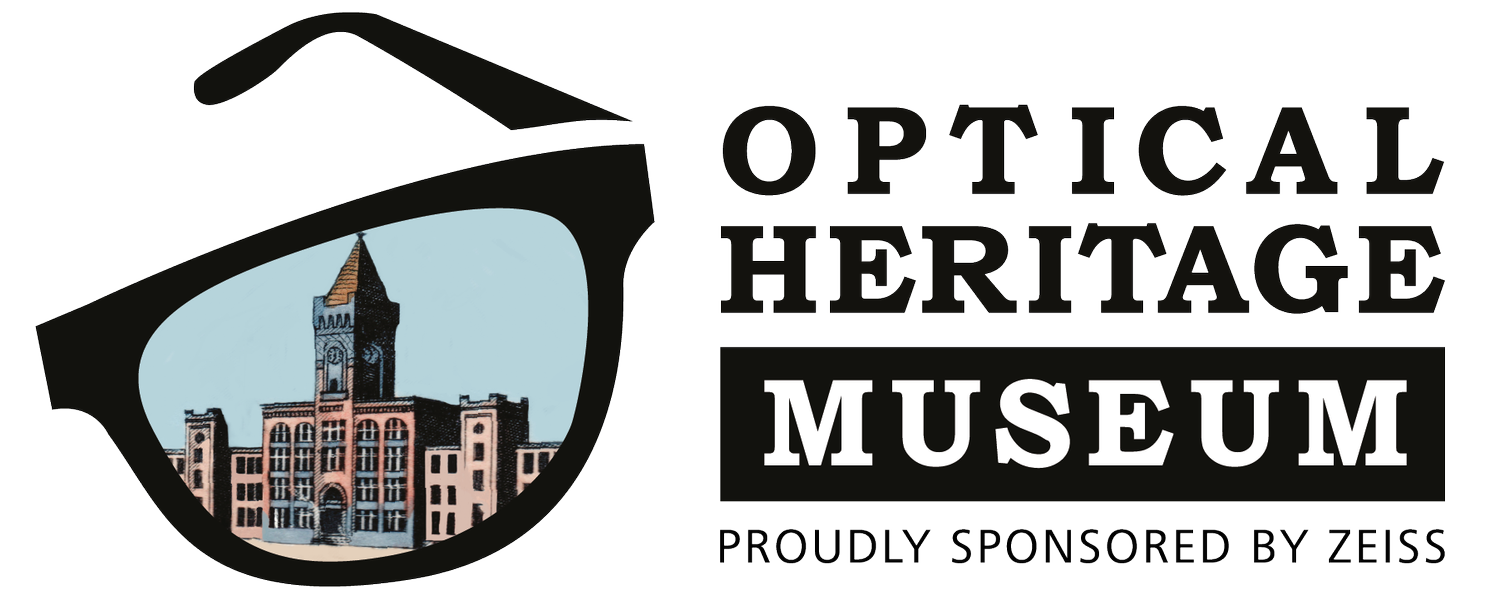
Optical and the Moon
When AO journeyed to space
Eyewear Companies Played a Surprising Role in the Space Race…
Apollo 11 brought man to the Moon, but many optical innovations were just as involved in the process.
By Ted Gioia.
Fifty years ago, the Apollo 11 mission brought the first astronauts to the Moon—and it’s surprising how many optical innovations were involved in this historic expedition. In fact, the whole space race relied on ongoing support from some of the leading eyewear companies in the world.
This anniversary is now being celebrated by the Optical Heritage Museum in Southbridge, Massachusetts. The Museum draws on the archives of American Optical, now part of Carl ZEISS Vision, and houses one of the largest collection of vintage vision care materials in the world. “We have items from American Optical’s involvement in the Apollo mission,” explains museum director and founder Dick Whitney, “ but many other artefacts and images have been preserved by NASA and the Smithsonian.”
In fact, Michael Collins’s eyeglasses, manufactured by American Optical, are displayed today as part of the permanent collection of the Smithsonian Air and Space Museum. These eyeglasses were included in the personal gear issued to each astronaut, and were often kept in an arm pocket on their jackets. The Apollo 11 spectacles went on a journey of almost a half million miles, to the Moon and back—the longest trip in human history.
American Optical proudly announced in 1970 that it had created the “first sunglasses on the Moon!”, and also shared a letter of commendation from NASA for its contributions to the space race. But in a curious coincidence, American Optical technology had already travelled to the lunar surface even before the start of the Apollo program.
In 1961, the company had developed the first functioning optical fiber laser under the direction of scientist Elias Snitzer—there’s a plaque on Main Street in Southbridge, Massachusetts to commemorate this breakthrough. The new laser technology eventually allowed the transmission of a light pulse to the Moon and back, thus providing the most accurate measure of the distance the astronauts would need to travel.
These technologies had to meet the highest performance standards. But often stood out for their stylishness as well—so much so that astronauts sometimes wore their space-age eyewear back on planet Earth. NASA photos of Gemini 5 astronauts Gordon Cooper and Pete Conrad, show them relaxing in their AO sunglasses on board the aircraft carrier USS Lake Champlain, after returning from a 8-day spaceflight, the longest in history at the time.
Gemini 5 Astronauts Gordon Cooper & Pete Conrad wearing American Optical sunglasses after returning from a week in outer space
A letter of commendation from NASA to American Optical on it’s contributions to the lunar mission
Some of the optical technologies assisted the astronauts, but others were for the benefit of the people back on planet Earth—who hoped to follow the space race from the comfort of their homes. At an early stage, NASA enlisted the support of ZEISS in creating a camera that could withstand the temperature fluctuations and zero gravity conditions of outer space.
When astronaut Ed White embarked on the first space walk by an American in 1965, he carried a ZEISS Ikon Contarex Special camera with him to capture that historic moment. This camera is now also part of the permanent collection of the Smithsonian’s National Air and Space Museum. There would be many photo opportunities in the coming years—more than 30,000 photographs were taken as part of the race to the moon.
One of the ZEISS cameras actually went missing in action—accidentally let go by an astronaut during a Gemini 10 spacewalk. It became a satellite of the Earth, and may still be in orbit some 53 years later.
For the actual landing on the lunar surface, ZEISS designed a special wide-angle lens, which offered maximum definition and sharp contrast. The cameras on board the lunar module made it possible for 500 million people to watch the historic first step and moonwalk.
“The Apollo mission was a milestone moment and extraordinary project for American Optical and ZEISS,” remarks Whitney. “These companies can boast of a celebrated history of providing up-to-date technology for long and dangerous expeditions, but this is one that, fifty years later, still hasn’t been surpassed.”
See a collection of NASA photos from the Gemini Apollo mission. Photos taken with ZEISS lenses and astronauts fitted with AO sunglasses.
Sunwear
Keeping cool while the weather heats up
UV
How professionals “saw the light”
You might also like…




